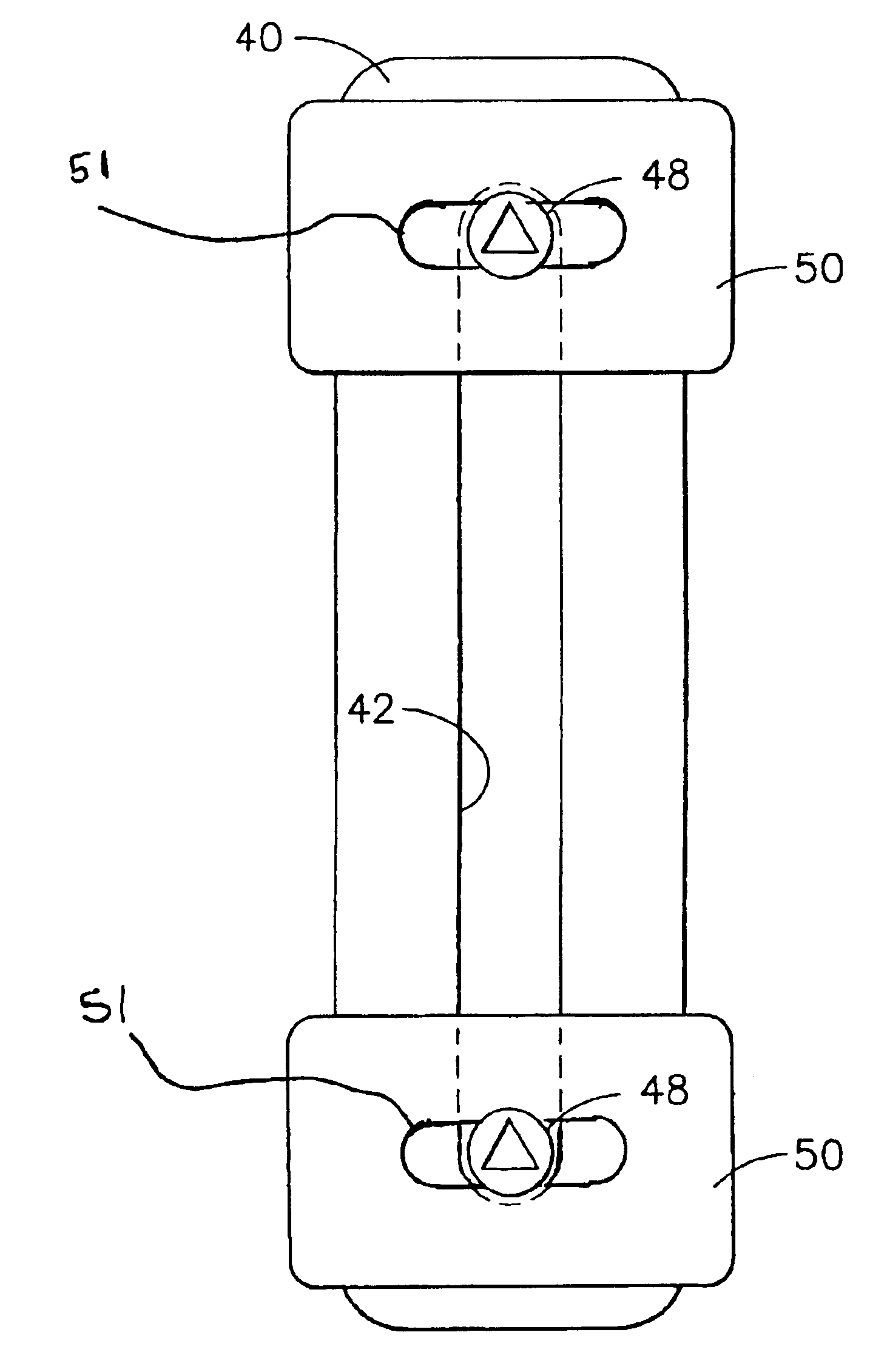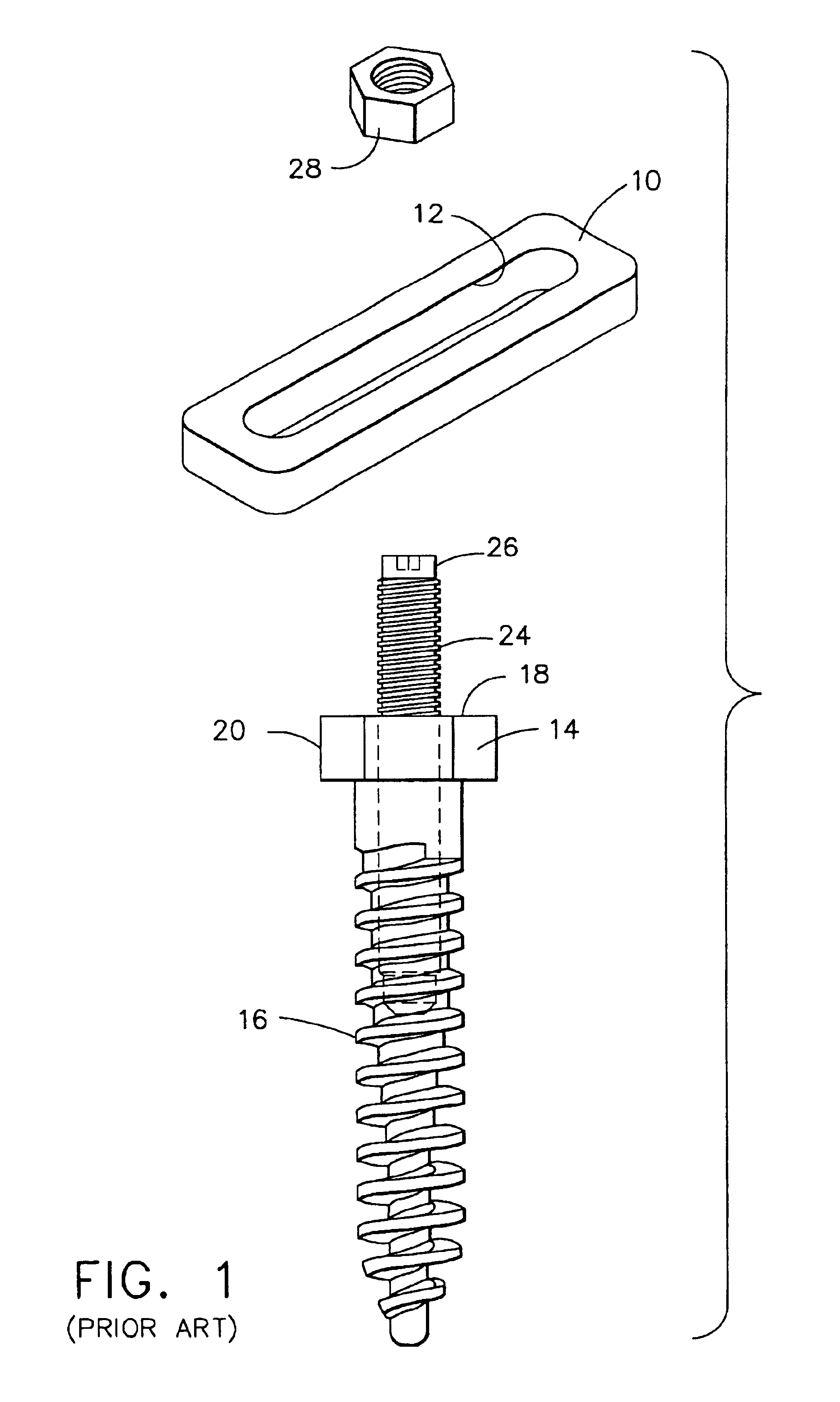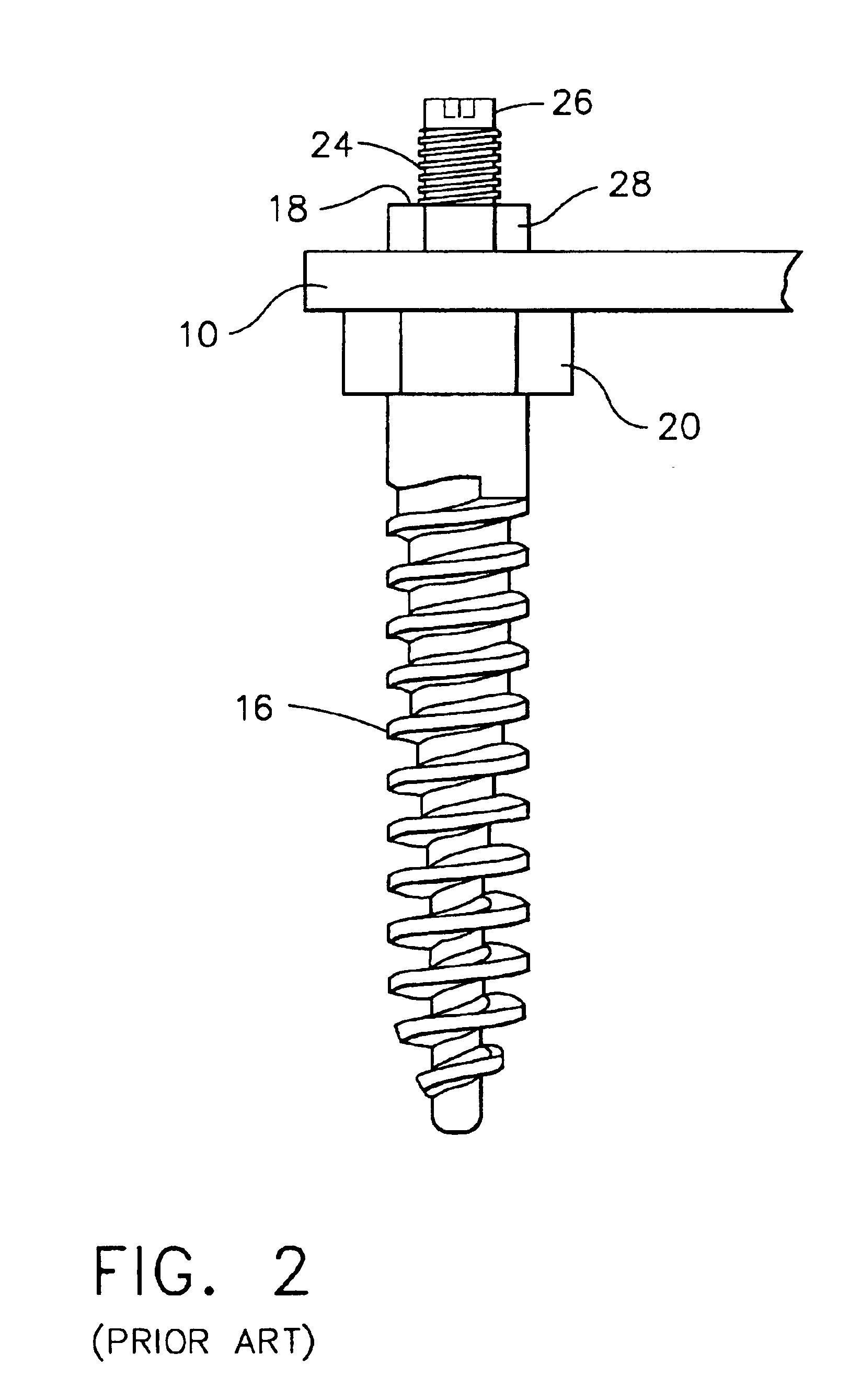Anatomic posterior lumbar plate
a lumbar plate and anatomic technology, applied in the field of spinal surgery, can solve the problems of less effective control of vertebral motion by redundant annular fibers, less able to handle compression load, and thinner nucleus,
- Summary
- Abstract
- Description
- Claims
- Application Information
AI Technical Summary
Benefits of technology
Problems solved by technology
Method used
Image
Examples
Embodiment Construction
FIGS. 1 and 2 represent a typical prior art plate system currently used for spinal stabilization. Referring now to FIG. 1, there is shown a spinal plate 10. Plate 10, which is generally rectangular or elliptical in shape, contains an opening 12 in its central portion. A pedicle screw 14 is shown having a threaded shaft 16 and an upper region 18. Screw 14 contains an extended section 20 shaped to easily receive a tool for threading screw 14 into the bone. Upper region 18 is shown having a threaded section 24 and a head 26. Head 26 is of a lesser diameter than threaded section 24 such that a nut 28 can be threaded onto threaded portion 24 of inner screw 22.
Referring now to FIG. 2, the plate system of FIG. 1 is shown in its assembled position. Plate 10 is positioned on pedicle screw 14 through opening 12 after it has been installed into the bone such that section 20 contacts the bottom side of plate 10. Nut 28 is then threaded onto threaded shaft 24 and against the upper surface of pla...
PUM
 Login to View More
Login to View More Abstract
Description
Claims
Application Information
 Login to View More
Login to View More - R&D
- Intellectual Property
- Life Sciences
- Materials
- Tech Scout
- Unparalleled Data Quality
- Higher Quality Content
- 60% Fewer Hallucinations
Browse by: Latest US Patents, China's latest patents, Technical Efficacy Thesaurus, Application Domain, Technology Topic, Popular Technical Reports.
© 2025 PatSnap. All rights reserved.Legal|Privacy policy|Modern Slavery Act Transparency Statement|Sitemap|About US| Contact US: help@patsnap.com



